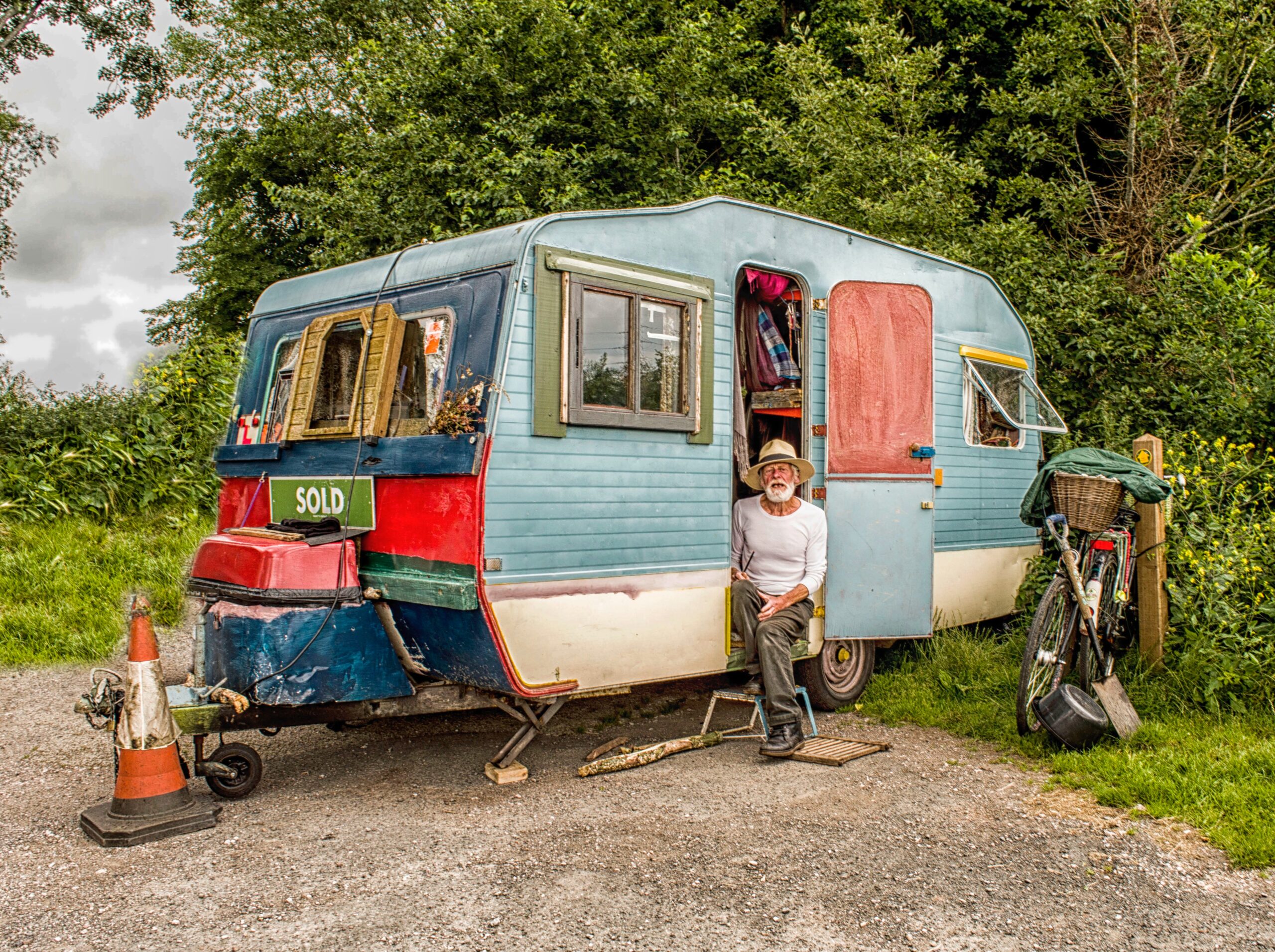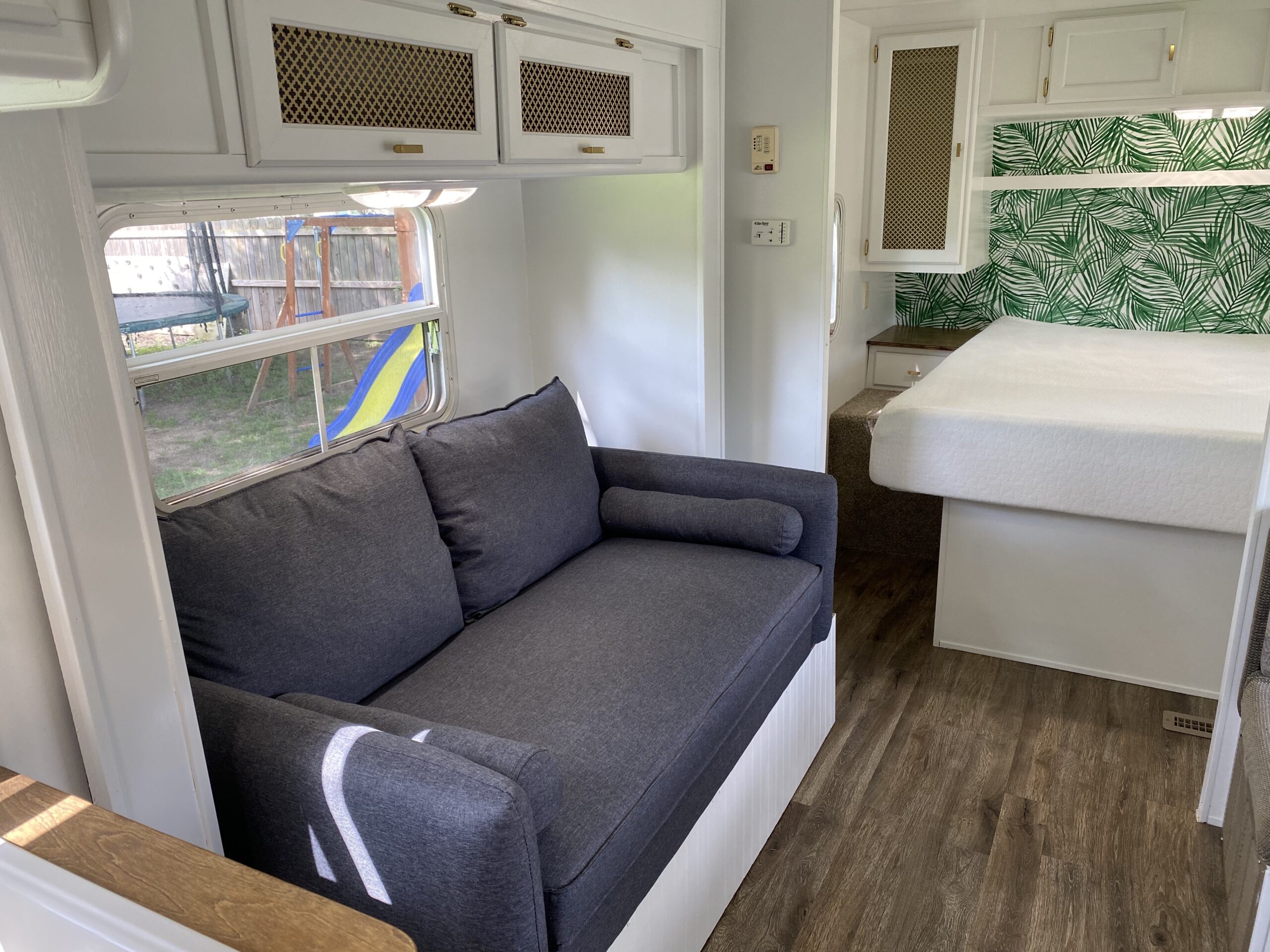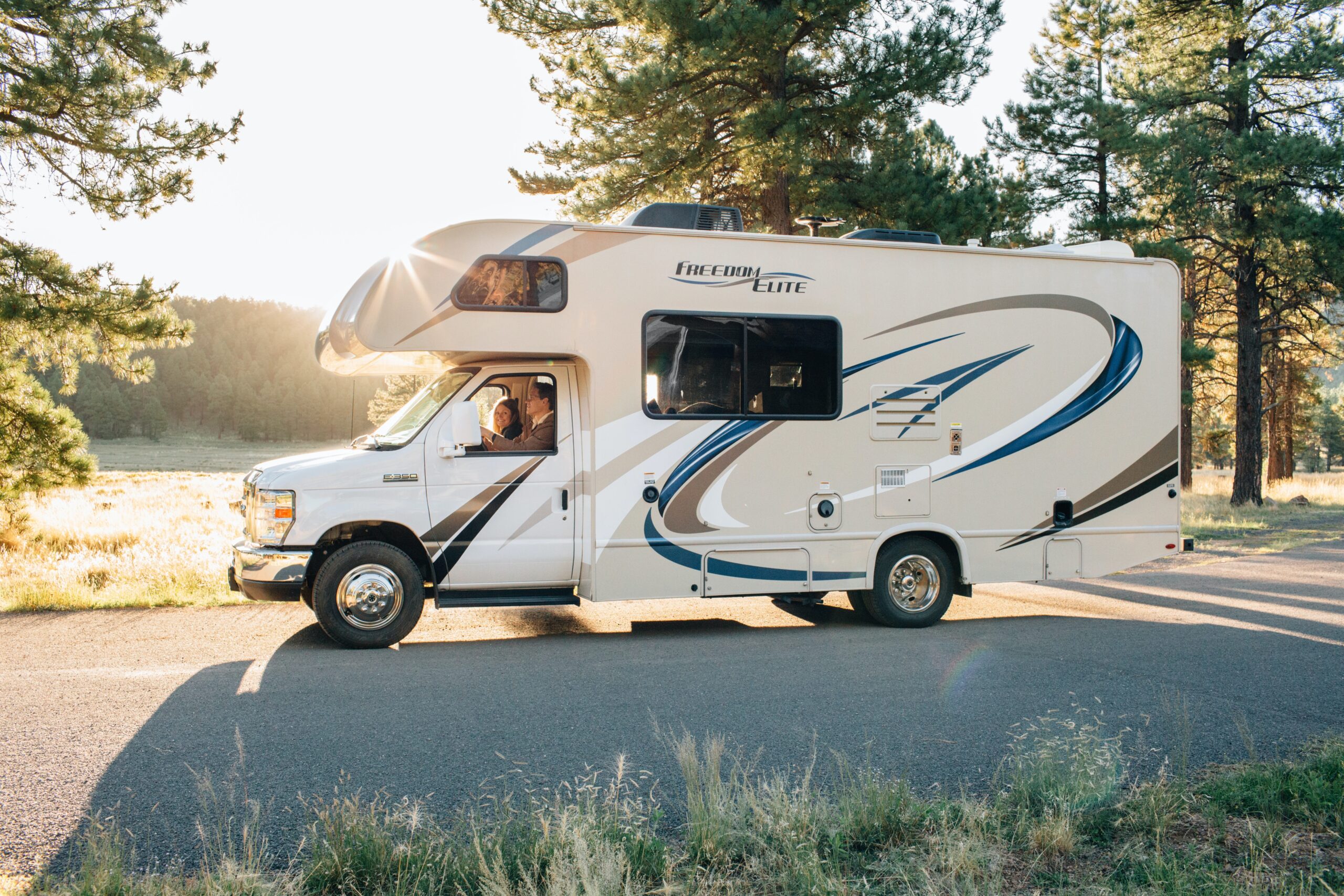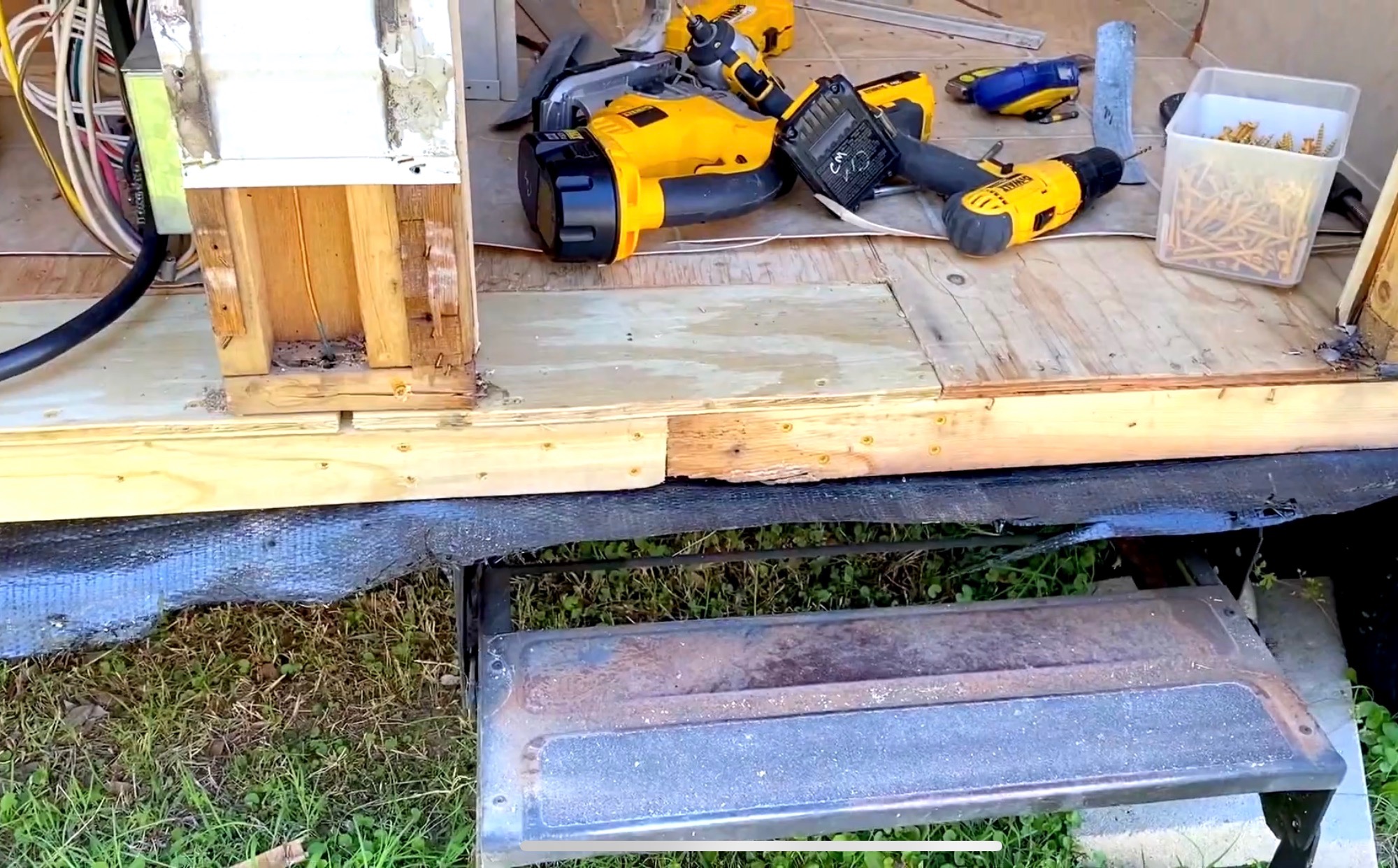Living in an RV, whether part-time or full-time, is a fun experience that can put you in the heart of the woods, surrounded by nature, and living a peaceful life. You’ve got no worries when you’re communing with nature — until your black water tank is full.
If you’ve spent much time in an RV, you know all about the smell, the need to find a dump station, paying for a honey wagon or figuring out what other options you have. Your black water holding tanks only hold approximately 30-40 gallons, depending on your rig.
A 30-gallon black water tank only lasts the average family a week. That’s no good if you want to be camping out in the wilderness or living in your rig full-time. Even as a single person or a retired couple on the road, you’ll need to empty your black water tank at least once per month, if not more.
Over time, valves wear and you may start having leaks and need to replace your valves that open and close your tanks. Malfunctions mean issues that are going to be gross.
What if there is a better way? There is a way to deal with human waste that is cleaner, better for the environment, and will allow you to stay off-grid for extended periods of time; never emptying a black water holding tank ever again.
We’re talking about composting toilets and if you’ve never used one, you’re going to be very pleasantly surprised.
What is a composting toilet?
A composting toilet is a waterless system of composting human waste and turning it into humanure. The first thing that many people think about is the smell and they allow their mind to talk them out of a composting system before they even try it. Here is a fact that you need to cling to and allow this to sink into your brain:
“Properly composted human waste has no smell.”
That’s a factual sentence. Let’s explore why that is. Composting human waste can be done in two ways that are the most popular methods. These methods are both designed to deal with the urine you pass because it is the urine and the moisture that it presents that hold smells. Remember this as well – urine is what smells the most and causes the smells in human waste systems.
Once fecal matter is completely dry, it has no smell at all. Therefore, getting it dry as quickly as possible is the key to composting without smell.
One method uses a urine diverter to move urine into a separate tank that can be emptied virtually anywhere. If you’re in the woods, you can mix some water with it and safely pour it onto the ground with no fear of killing any plants or leaving a smell (due to diluting with water).
Before you say that this is disgusting, let us explain to you that you’d be wrong. Your urine is filled with a nitrogen-phosphorus-potassium (N-P-K) ratio of 10:1:4. Plants need this as well as the other trace elements and minerals in urine. It is actually good for plants when you divert your urine to them.
Emptying this container is best done right before a good rainfall or you can also carry it into any rest area and dump it right into their toilet if you feel that’s what you’d like to do. It’s simple, in a sealed container and simply needs to have some freshwater swished inside to keep it free of deposits.
When you take liquid out of the mix, you start the process of drying the fecal matter. You need to provide the main bowl of your composting toilet with some sort of compost starter. The best forms are natural forms of plant matter that allow air pockets for drying purposes.
Some use peat moss, coconut shell husks, pine pellets, and even leaves in fall will make decent compost starter. These help jump-start the breaking down, absorption of moisture and drying of human waste.
Some systems don’t divert the urine but use a heated chamber to quickly dry the pot and wick the moisture away through a vent that is vented to the great outdoors and will not smell to those around you, don’t worry.
So now the big question is …
Can you put a composting toilet in a camper?

The short answer is yes. You should check into regulations where you will be tagging your vehicle and whether or not you have any inspections done by local and state municipalities. Most don’t, but you should always do your due diligence.
That said, some RV dealers even offer options to install composting toilets now, so ask when you make your purchase. In order to install one in an RV after-market, you’ll need to take your existing toilet out and cap it off, seal off your floor area, and simply place your new composting toilet on top of the new floor.
You can leave your black water tank underneath your rig and it will provide some cover for you, in situations where you are supposed to have it.
How does a composting toilet work in an RV?
It’s going to work in the exact same way as it would if installed in a cabin or house. If you’ve chosen a model that requires power to heat the compost and speed-up the composting process as they do, you’ll have to have it wired into your power and you’ll have to be hooked to shore power or have solar panels that allow you to charge your chassis batteries each day so that your toilet can run off those.
For some, this is problematic because these types of toilets can use 80-150 watts of power for each hour that it is in use. It isn’t impossible with enough solar panels, but you should definitely do the math and ensure that you’ve got plenty of power for all systems, with the toilet in place. It will need to run most of the day in order to properly compost.
On the other hand, if you choose a model that composts without using power, the compost will not be fully composted when your system is full. It will definitely be started well and it won’t smell as long as it is vented properly — which can be done through the line that already is in place to vent your black water tanks. It isn’t overly difficult to do if you are moderately comfortable with DIY projects.
A fan that draws air from your composter to this vent and carries fumes outside will prevent any smells and help aid in the composting process.
When you empty your compost bins, they are all designed as buckets that can be lined with special bags. You can use trash bags that will biodegrade if you intend to dispose of them as compost, or you can bag it, tie it shut, and toss it into a dumpster where it will breakdown in a landfill, safely.
Can you pee in a composting toilet?
As mentioned early on, this depends largely on the type of composting toilet that you are using. Most of them use a urine-diverting system to channel the urine to a separate bottle that is easy to pull out and dump as often as necessary.
This may feel awkward at first, but you’ll get over it quickly. If it is any consolation, men and children have been peeing in the great outdoors for as long as humans have inhabited the earth. In other words, you’ll get over it.
How do you poop in a composting toilet?

Only a few things are different. You will always have your lid closed, so you’ll have to open your lid. At that point, you’ll see the contents in your bucket, however, it’s important to point out that if the last person did their job properly, you will only see dirt.
You’ll sit down and do your business just as you always have. You’ll use toilet paper as you always have too. You can drop the toilet paper right into your bucket because it will compost. It will break down last, so it can be seen for longer than anything else but, in time, it also turns into dirt.
Once you are finished, you will take a small amount of your composting material. Peat moss weighs very little and is almost powdery in form. You want to use only enough to just cover over your stool. This helps it to begin drying and breaking down immediately. Each time the toilet is used, this process should be followed.
The average composting toilet will hold 60-90 uses before needing to be emptied. By the time you empty the contents, it will largely be composted at the bottom.
Do you have to empty a composting toilet?
Eventually, the bin will get full and you’ll need to open the top of your toilet, exposing the container inside that simply pulls out. It is essentially a bucket. You may wish to do this outdoors in case you spill.
Take your bucket outside, slip a garbage bag over it and slowly turn it over to empty the contents. Obviously, you should wear some gloves. If you are careful, you won’t actually touch anything other than the bag.
If you are going to simply take it out into the woods and dump it under a tree or in some bushes (which will be fine as it is already mostly composted), just walk it to your spot and turn the bucket over without a bag.
The compost will cure and continue breaking down until it is rich soil, filled with minerals and vitamins for the trees and bushes, safely returning your food back to nature.
You do not need to wipe the inside of the bucket or clean that because it will simply help start your next batch of compost, already having the microbes to start the job.
RV composting toilet pros and cons
Pros
- Not having to deal with black tank
- Longer time between dumping
- Introducing natural materials back into environment
- Saves Water
Cons
- Some toilets require more power than others
- Visual aspect of filling containers
- Can be a mental challenge to overcome
Types of Composting Toilets
Nature’s Head

This is one of the brands that has been around for a very long time and is highly recommended by reviewers.
This system has a urine diverter tank that mounts at the front of the toilet, allowing for easy removal to empty. You can also view it when it is full, thanks to the built-in window that shows levels without showing the entire contents, which is off-putting to some people.
This system does require power to run the fan that expedites the composting process. It needs to be plumbed to the ventilation pipe.
Coconut husks are recommended as the compost starter. This system also has a built-in handle that allows you to turn it a few cranks to mix the contents of the tank, which further expedites composting and ensures that you never have to open the lid and see raw waste on top.
You can expect to spend about $1000 on a Nature’s Head composting toilet but they are considered the cream of the crop. It is completely self-contained and safe for use in RV, home, or cabin.
SunMar

This is a very expensive brand that typically is made to court the people who want to install a system in a home. They utilize a special composting tank that is typically installed under the home, where you can remove the compost after months of composting and working its way down through the tank levels. They do have a stand-alone system that can be installed in RVs, but in comparison to Nature’s Head, which is less expensive, it isn’t in the same ballpark.
DIY

Believe it or not, you can make your own box that has a vent hose from it to your vent pipe to allow smells to escape. You can buy your own urine diverter and attach it under a normal toilet seat, with a hose that can be run to any bottle that you want to use.
You can use a five-gallon bucket and add substrate to it just like you would with any of the other models on the market. The downside to this method is that it won’t compost quite as quickly because it isn’t using power, though you can install a small fan to help pull the air out of your box.
Most people use a small computer fan for this. You won’t have a hand-crank to turn the compost, so you must be sure to cover after each use with a substrate of some sort.
People who use this type of self-made toilet have reviewed the coconut husks, pine pellets, peat moss, and even using leaves raked from the local environment. The leaves that are dry in the fall seem to work quite well. Use what you like and what works best for you.
Conclusion
There are many pros and cons. One thing that you’ll hear frequently is that there is no smell. This isn’t quite right. There is a smell. It’s simply not overpowering, nor is it particularly obnoxious when you empty your contents. Try to wait at least four hours after the last use so that it is composting and smells are minimal.
It is more labor-intensive to deal with adding your composting mix to the pot but otherwise no worse than having to pull into a dump station, hook-up your stinky hose, and empty a black tank that smells so bad that it makes you want to vomit. Compared to that, composting toilets have little to no smell.
If you have young children, their booster seats may not line up with the urine diverter perfectly and you’ll also need to be the one to add the composting mixture after they use the toilet. You’ll need to keep this mixture in a sealed container of some sort that is near the toilet but out of reach of playing kids or pets.
You’ll want to make sure that you choose something that you can get when you are out on the road easily. Peat moss has always been my personal choice for this reason and the fact that it is very lightweight.






